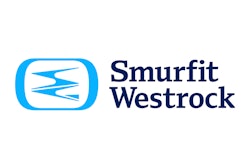In short RFID is a data capture technology that involves tiny units composed of a microchip and antenna called RFID tags. Tags are embedded in packaging materials and transmit radio signals to a RFID reader which records important product information.
Interest in RFID in regards to packaging was generated in June of 2003 when Wal-Mart announced that their top 100 suppliers would be required to provide RFID tags for pallets and cases by January 1 2005. Their announcement set the course for the packaging industry for the next several years.
The Benefits
Advocates of RFID technology like Smurfit-Stone EPCglobal and the Department of Defense understand the benefits that the implementation of RFID would mean for supply chain operations. Such benefits include:
• Supply Chain Management – Manufacturers can use RFID tags to track goods while transporters and distributors receive up-to-date information about location of shipments. In turn consumers receive fresher goods and are ensured about the authenticity of the products they purchase.
• Tracking – RFID tags emit an electronic product code (EPC) that is unique to each item thus making it possible to track goods in production and in transit. This helps to prevent theft and distinguish between real and counterfeit products.
• Inventory Management – The tracking capabilities of RFID will allow suppliers to accurately adjust output based on demand. Similarly retailers can avoid costly over-stocking and reduce instances of out-of-stock.
• Reduced Human Involvement - The process of reading RFID tags is faster and does not require as much human involvement. Unlike barcodes RFID tags do not need a direct line-of-sight in order to be scanned. Reduced human interaction results in lower labor costs and fewer errors. RFID saves money and speeds up operations while improving accuracy and productivity.
Currently RFID tags are being used in warehouses at the pallet and case level due to cost and several technology issues that have yet to be addressed.
Once a store becomes RFID enabled the combined use of shelf-management systems and item level RFID tagging will reduce problems that diminish revenue. Lost sales from in-stock items that cannot be located will also be reduced.
Problems and Remedies
While demand for a RFID solution is significant there are several issues that need to be addressed before it is in mainstream use. Problems include:
• Privacy – Consumers view the use of RFID tags on individual products will be used to track their movements. RFID tags do not have the long read ranges which would be necessary for tracking movement over long distances.
• Standards – There is no all-inclusive set of standards covering the various technologies and equipment for RFID. However the Uniform Code Council and EPCglobal are working on a set of generally accepted standards.
• Materials – Certain materials such as liquid and metal can impact readability.
• Read Ranges – RFID tags have a short read range which means that a reader must be in close proximity for the product to be identified. This also poses a problem for large objects whose tag is faced away from the reader.
Smurfit-Stone offers RFID expertise standards involvement (EPCglobal) tag application support and testing at its state-of-the-art RFID lab in Carol Stream Illinois. Testing involves tagging boxes in different locations and running them on a 600 fpm (feet per minute) conveyor belt with a reader that interprets RFID tags. This helps determine the best location and type of tag to use. It also records how many times a tag can be read.
Beyond the Warehouse
Smurfit-Stone is broadening the scope of RFID. Their patented SmartDisplay a point-of-purchase display incorporates RFID technology for item tracking providing a new efficient method for inventory management at the retail level.
Through RFID technology SmartDisplay records information on how consumers respond to different promotions display designs and locations. In addition SmartDisplay monitors how many times a product is removed from the shelf replaced or purchased. Retailers are provided with measurable results that can be used to make future decisions regarding displays and products.
Looking to the Future
There is little doubt that the general adoption of an RFID solution will greatly impact supply chain operations. As a supplier of RFID enabled packaging Smurfit-Stone is dedicated toward RFID and the wireless network.
For information regarding Smurfit-Stone or its RFID capabilities visit our website at www.smurfit-stone.com or call us at 877-772-2999.
[This is a sponsored article from the supplier listed below.]

























